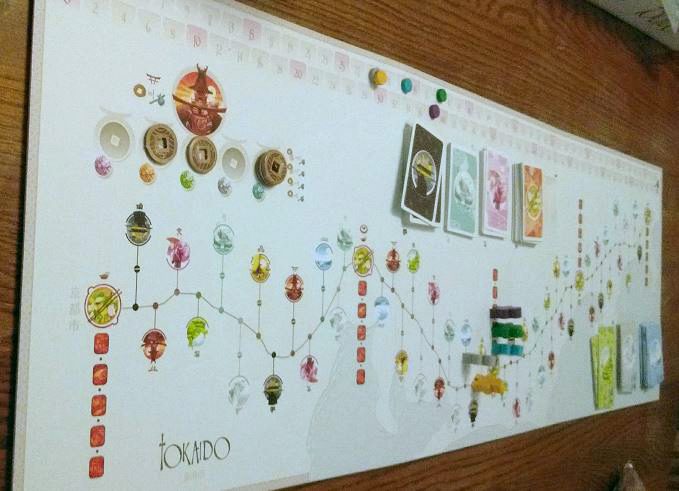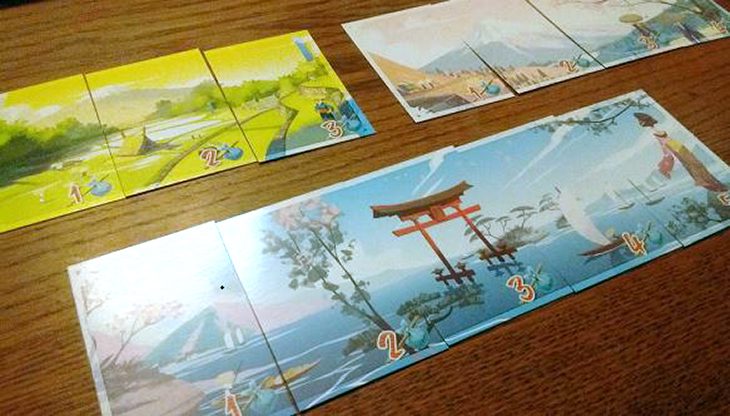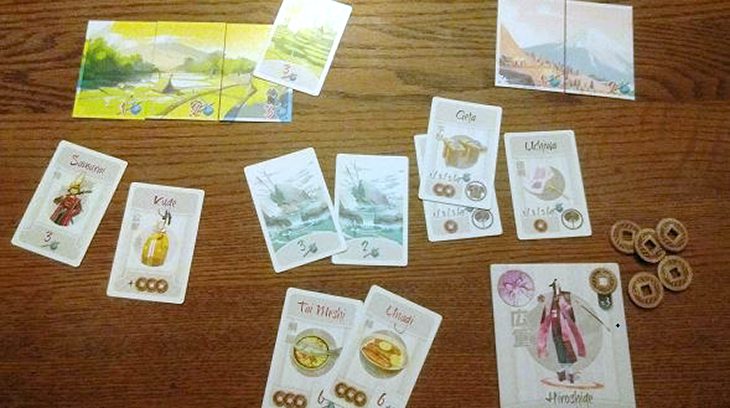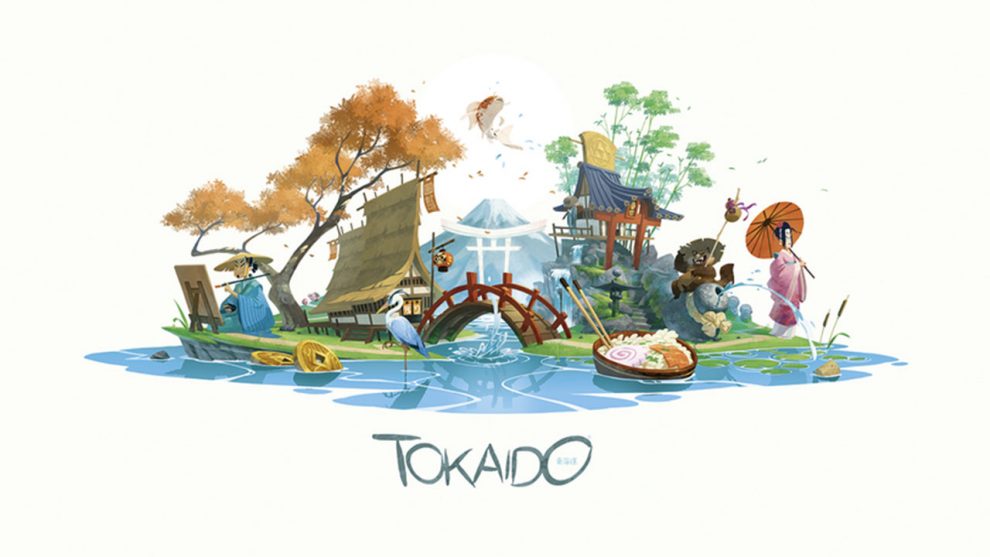I’ve never been to Japan. It’s not even on my bucket list of things to do. I’ve seen entire websites devoted to innovative, Japanese inventions and solutions to problems I never knew existed: Nursing bras for men. Floor-length umbrellas. Cubic watermelons. Vending machines full of eccentric oddities.
Is it any wonder someone created a Japanese board game about Hopscotch? No. It’s not. (You may have to read the previous sentences multiple times to get the proper meaning.)

Tokaido is a game where players journey across Japan. Inspired by the Tokaido road that connects Tokyo and Kyoto (bonus points to anyone who noticed the anagram), each journey will offer a selection of inns, temples, and souvenir shops. Along the way, they can paint panoramas of the landscapes, dine at fine restaurants, relax in traditional hot springs, and/or work at farms to collect enough income to finance their trips. Encounters can alter the expedition, and when everyone eventually reaches the destination for a celebratory meal, they compare experiences to see who made the most of the 53 possible locations along the way.

“It’s not about the destination. It’s about the journey.” — Ralph Waldo Emerson
“So the last shall be first, and the first last.” — Matthew 20:16(a)
“Let me get this straight. Someone turned hopscotch into a board game?” — My wife Leslie
Tokaido implements a straightforward mechanic for movement. Travelers are placed at the starting inn (nearest Kyoto on the board), and whoever is furthest from Tokyo is the next person to move. There is no reward for reaching the end first, besides being the first to select a meal. Indeed, there are three inns before the final stop where everyone must eat and rest before anyone begins the next leg of their campaign.

Travelers need not hop all the way to the front of the line. They may occupy any empty location along the road up to the next inn. With four or five, many locations have two spots – the first to arrive takes the location closest to the path while the second uses the outer spot.
Inns work fundamentally the same way, with the first journeyer selecting his meal first and using the station closest to the path, then each consecutive person taking the next outward one. When all have stopped for a meal and rest, the furthest from the path moves out first.

Is it worth creating a quick painting of the sea, or would it be more beneficial drawing out the larger rice paddy? Each panorama station allows players to add the next stage of their respective artwork, and the first player to complete each panorama receives a bonus.
What about shops in the village? Have I sufficient funds to buy the desired variety of souvenirs? Random card draws make it possible that all the wares will be pricey, or that one shop will stock only clothing. Collecting the most will earn you a prize.

Praying at temples is a short-term sacrifice for long-term gains and the most devout will be the most highly rewarded.
For those of you feeling risky, encounters present a random assortment of options and can be the only avenue to achieving a goal other players have already prevented.
After the first game, players understand how everything works. Scoring is crisp and explained well in the rulebook, and you can either score points with each turn along the road or tally points once everyone has finished. There’s not much AP, because it’s so straightforward.

The board looks like a colorful timeline, but it doesn’t outstay it’s welcome. Play speed moves at a relaxed feel, quick enough for a cleanser but long enough to contain substance and real decision making.
My only drawback is the sameness. Asymmetric travelers only take you so far and while multiple strategies can be employed and changed on the fly, the trek can start to feel repetitive after a handful of plays. The play time diffuses that somewhat, and Tokaido is a rarity where the suggested time on the box (45 minutes) may actually be longer than the game requires.
Even so, multiple variations are included in the rulebook, and there are several expansions to add newness. (When a game is so bold as to call one “Crossroads: The First Expansion” without sarcasm, I suspect more will arrive).
Tokaido fills an unusual niche. I’m not sure if it’s a Euro game, though it certainly bears characteristics thereof. There’s minimal player interaction besides one person taking a spot or reward before another arrives. Conversely, if you rush forward to deprive that action, they can theoretically take multiple actions before leaping you in order. It’s not exactly worker placement or action selection, as every location is a point grab in its own way. Even so, the theme resonates with every piece. Durin’s stylized illustrations are rich, distinct, and vibrant. I’ve never been a proponent for framing game boards, but if I was, this would be part of my collection. Despite the depth of atmosphere, there’s no way I’d consider this Ameritrash.
I suspect if I ever get to Japan, this is the kind of eccentric oddity I might find in one of their vending machines or souvenir shops. Probably somewhere along the road between Kyoto and Tokyo. It’s worth the trip.












Add Comment